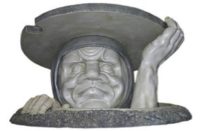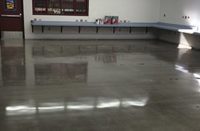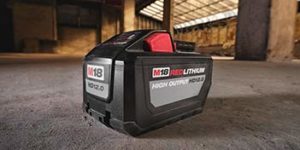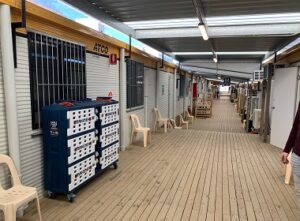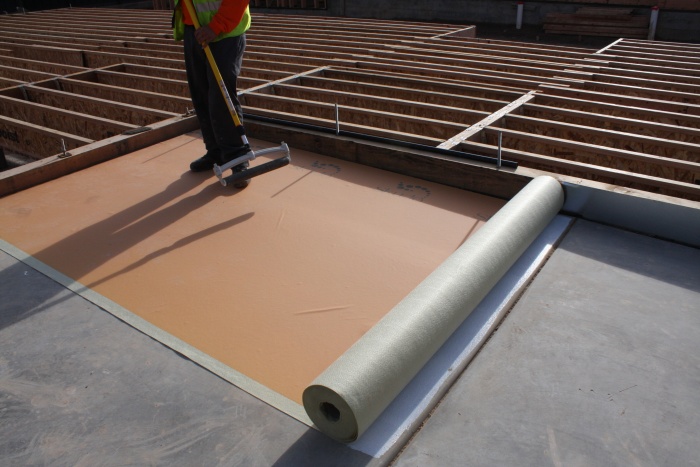
Each job your company completes is a billboard. Each project says, “Yes, my company is good and worthy of your next decorative project,” or it says, “I’m a work in progress that right now, unfortunately, is not worth the chance.” Few billboards imply anything in between.
At the end of the day it comes down to three issues. Can your crew produce quality work? On schedule? And on budget?
After decades in this business, I can honestly say it all starts with floor protection. You can be the best in the concrete staining business, but if the floor wasn’t protected prior to your arrival, the odds are stacked against you well before you get started.
Most decorative installers learn this the hard way. They bid a job, shuffle through picking colors, and then order materials only to arrive on the job to find an absolutely preventable mess. Finger-pointing leads to blame and blame leads to conflict. The end user, the customer, usually pays the price at day’s end. The “billboard” in this case will say nothing good for the decorative concrete installer, trust me.
Protecting your work begins well before you start a project and ends long after you’re done. You may not want to hear this, but the responsibility lies with you to make sure the concrete is protected. You are the skilled professional. It’s not the architect’s or builder’s job to develop a plan for floor protection.
Two ways to protect your concrete work surface
I would like to introduce two products that will protect your concrete work surface not only before the decorative installation process, but afterward too.
Floor protection will add to a job’s cost, of course, but the cost is low and the reward is priceless. I have yet to hear a builder, contractor or architect complain when I offer to handle the floor’s protection. Don’t be afraid to charge accordingly.
We’ll talk more about combined (labor and material) floor protection costs, but only after I introduce the two products.
Not many World of Concrete exhibits stop me in my tracks, but the Skudo booth managed to do just this. By far, Skudo is the most durable floor protection system on the market.
Skudo floor protection comes in three grades (HT, MT, and LT), with the difference being anticipated floor traffic.
Here is how this unique floor protection product works. The two-part system uses a combination of base coat and mat to create a thick surface membrane over the concrete’s surface. This membrane can withstand forklift traffic, scissor-lift traffic, scaffolding, paint, liquids, you name it. Once you no longer need protection, simply peel the membrane sheet up and discard.
One added benefit I noticed was how clean the floor looked after I peeled the product up. Most of the dirt and tiny debris came up with the membrane, leaving an extremely clean floor. This product can be used on all hard flooring, both commercial and residential. Depending on the grades chosen, the cost for this type of protection starts at 65 cents per square foot (plus labor).
Skudo alternative, Ram Board
Ram Board is a flex-fiber temporary floor protection product. This is a one-step system that does not require a base-coat application. Ram Board is heavy-duty — it provides an economical solution protecting against spills, and it is nonstaining and reusable. It resists water, paint and mud for both new and existing concrete. Ram Board recommends using its vapor-cure tape to prevent cure lines and blotchiness by allowing concrete moisture to escape the membrane’s surface.
This product can also protect concrete counters and wall corners. It comes in 38-inch by 100-foot rolls of material 46 mils thick and will protect most floor surfaces. It is 100 percent recycled and made in the United States. This product will add around 26 cents to a project (plus labor).
Honestly, protecting a floor before and after installation is costly. As you can see, even the less expensive (Ram Board) method will add about 50 cents per square foot in labor and material to the job’s budget. But this alone is misleading. How much time and effort is spent preparing an unprotected floor before installation and how much effort is spent repairing an unprotected floor after installation?
My advice is to take a proactive step regarding how you protect your concrete work surface while the competition thinks of creative excuses for why your work consistently looks better than theirs.
My firm usually adds floor protection cost as an option when bidding decorative work for a new customer. The best time to address floor protection is at the designing stage of a project, if possible. Remember, you’re the decorative professional, so bring along a sample to help all decision makers visualize exactly what floor protection looks like and why it’s so important.
www.skudousa.com
www.ramboard.com
